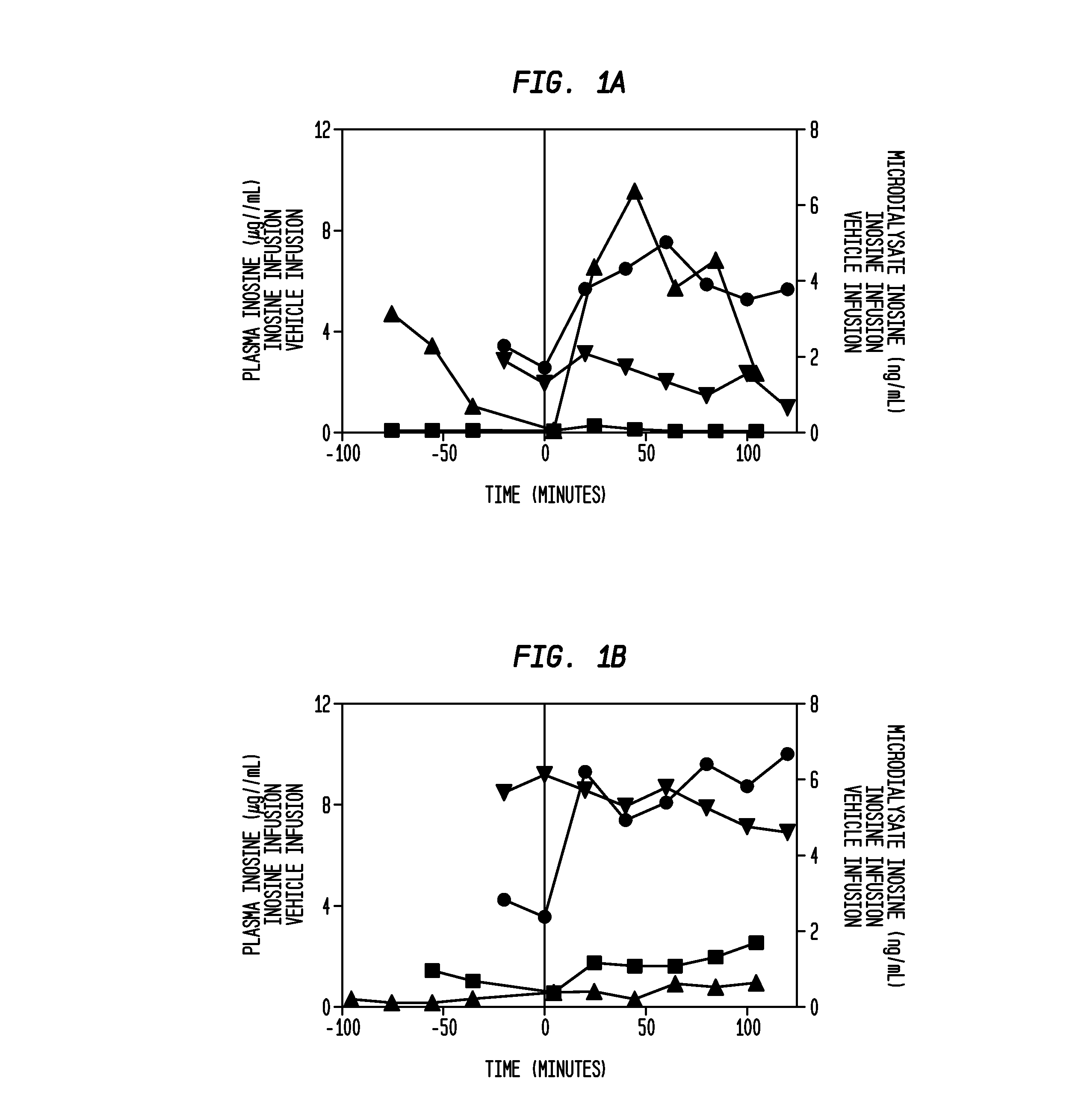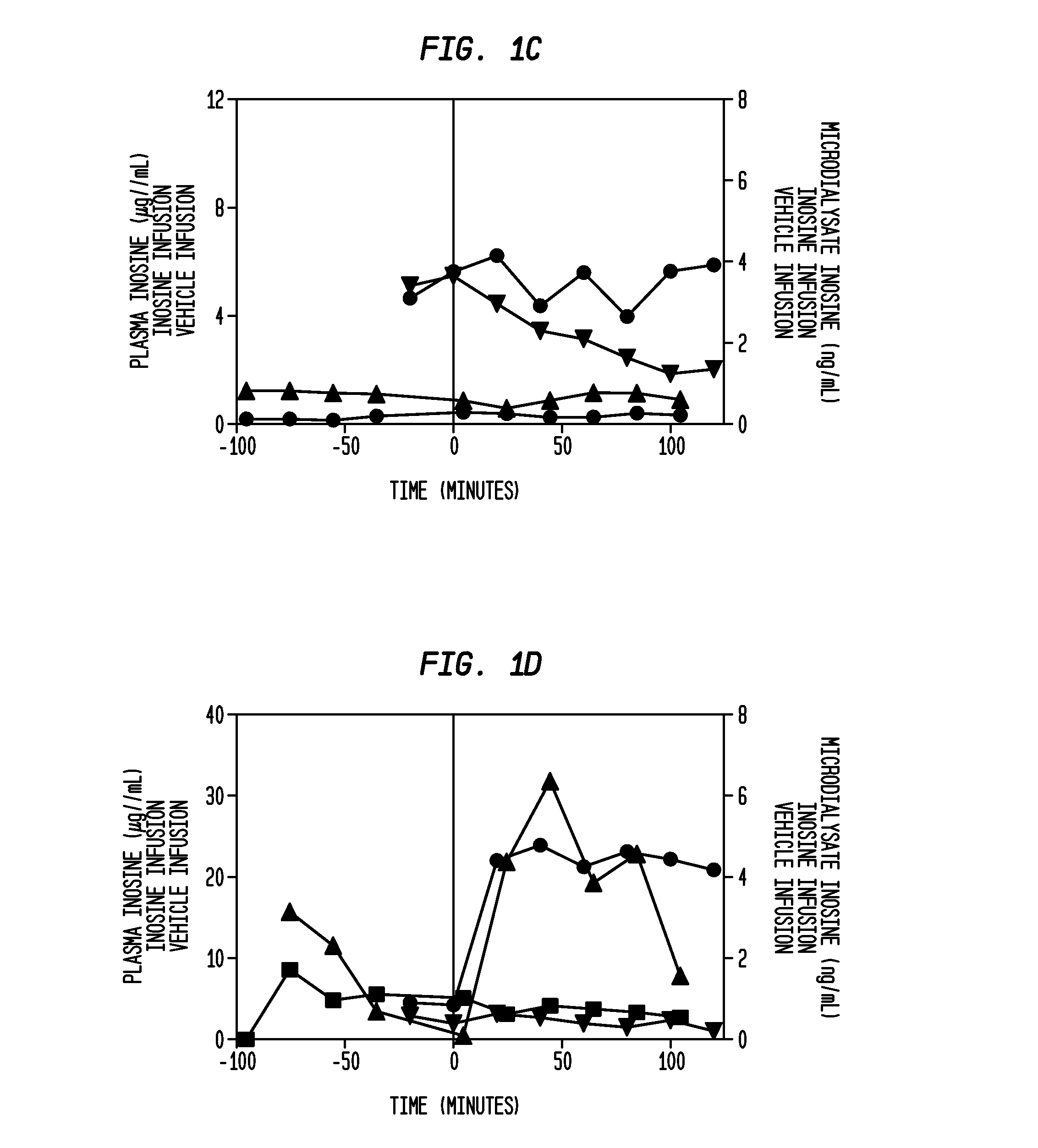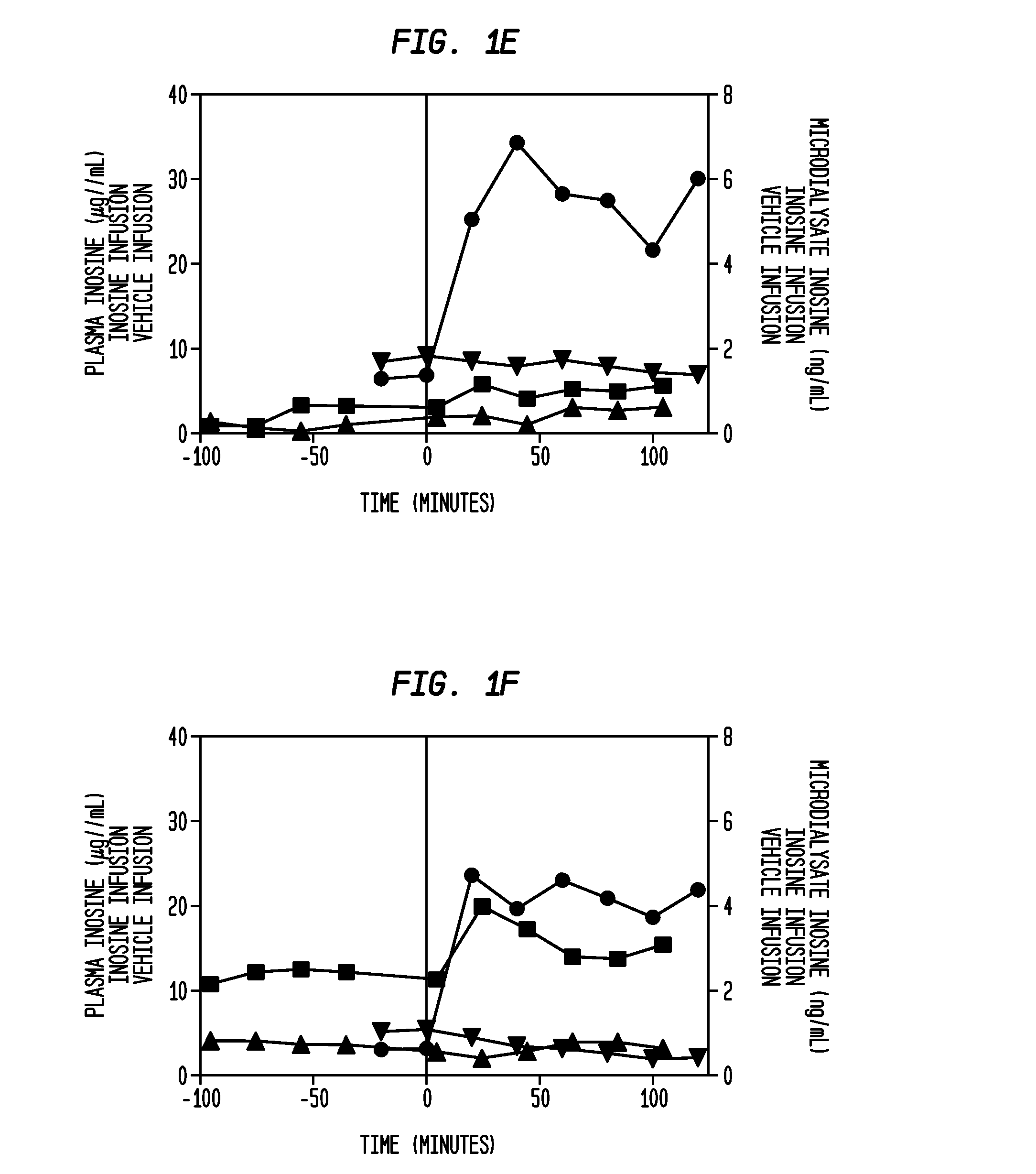Systemic purine administration: modulating axonal outgrowth of central nervous system neurons
a central nervous system and axonal outgrowth technology, applied in the field of systemic purine administration, can solve the problems of inability to re-grow severed connections, cognitive, sensory and motor function loss, and largely irreversible functional impairment, and achieve the effect of reducing the number of isolated connections
- Summary
- Abstract
- Description
- Claims
- Application Information
AI Technical Summary
Benefits of technology
Problems solved by technology
Method used
Image
Examples
example 1
Evaluation of Effectiveness on Central Nervous System Neurons
[0132]Modulation of CNS neurons is evaluated by any accepted method of measuring axon regeneration. This includes direct observation and indirect evaluation such as by evaluating subjective symptoms or objective physiological indicators. Treatment efficacy, for example, may be evaluated based on a neurological examination, electrophysical examination, intact segmental reflex examination or any combination thereof. (see Borgens et al. Restor. Neurol. Neurosci. 1993, 5, 305-322, which is incorporated herein by reference in its entirety).
[0133]Treatment efficacy for evaluating subjects may also be defined in terms of stabilizing or improving neurological, electrophysical and reflex properties. In determining the effectiveness of a particular therapy in treating CNS disorders, patients may also be clinically evaluated by a practitioner several days after administration and / or at least one-month later.
example 2
In Vivo Evaluation of Cortical Rewiring after Brain Injury
[0134]Modulation of CNS neurons is evaluated by any accepted method of measuring axon regeneration. (See N. Dancause et al. 2005, J. Neurosci. 25(44) 10167-10179, which is incorporated herein by reference in its entirety.) A model for post stroke motor recovery and focal cerebral ischemia uses nonhuman primates such as squirrel monkey, baboon and macaque (see, S. Fukuda et al., ILAR Journal 2003, 44(2) 96-104, which is incorporated herein by reference in its entirety). A squirrel monkey model is used to assess post-stroke motor recovery (see R. J. Nudo et al., ILAR Journal 2003, 44(2) 161-174, which is incorporated herein by reference in its entirety).
example 3
Determination of the Relationship between Infusion Time and Inosine Concentration in the Extracellular Fluid of the Brain
[0135]A cohort of 4 to 12 patients (each patient implanted with a microdialysis catheter to manage elevated intracranial pressure in an intensive care setting) receives IV inosine at a constant infusion rate for 2 hours. Before, during and after the infusion, samples of brain extracellular fluid are obtained from the catheter at 30 to 60 minute intervals. The samples are used to determine the relationship between infusion time and inosine concentration in the extracellular fluid of the brain. In additional cohorts, increased infusion rates are studied in a similar fashion to determine the relationship between infusion rate, infusion time and inosine concentration in the extracellular fluid of the brain.
PUM
| Property | Measurement | Unit |
|---|---|---|
| volume | aaaaa | aaaaa |
| pH | aaaaa | aaaaa |
| volume | aaaaa | aaaaa |
Abstract
Description
Claims
Application Information
 Login to View More
Login to View More - R&D
- Intellectual Property
- Life Sciences
- Materials
- Tech Scout
- Unparalleled Data Quality
- Higher Quality Content
- 60% Fewer Hallucinations
Browse by: Latest US Patents, China's latest patents, Technical Efficacy Thesaurus, Application Domain, Technology Topic, Popular Technical Reports.
© 2025 PatSnap. All rights reserved.Legal|Privacy policy|Modern Slavery Act Transparency Statement|Sitemap|About US| Contact US: help@patsnap.com



